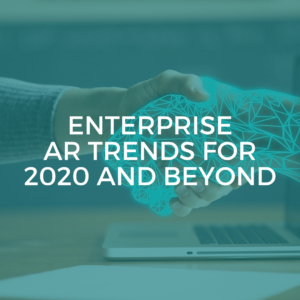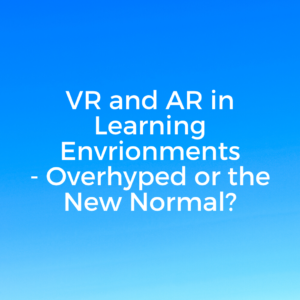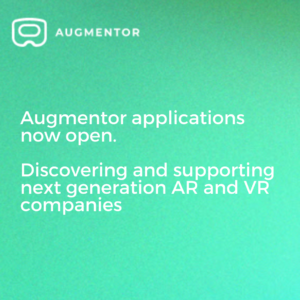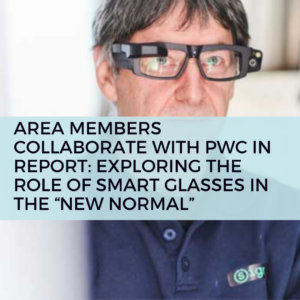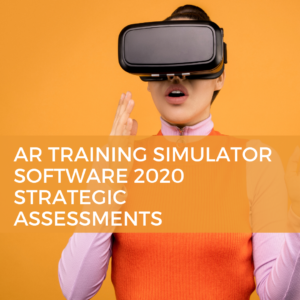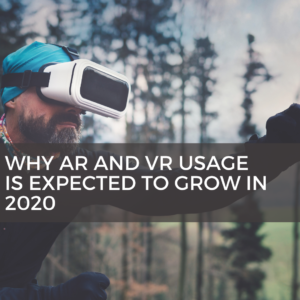How Can VR Change the Training Industry?
Let’s take a look at how VR will affect the 70:20:10 model of learning. We know that classroom and e-learning modules only account for 10 percent of learning. Seventy percent of learning comes from tackling real-world tasks and problems. The other 20 percent comes from social learning via observation of others and feedback.
But what if learners could receive on-the-job experiences without actually being on the job? VR promises to do just that via a simulated environment.
Within the simulated environment, the learner must make on-the-spot decisions and respond to real-time stimuli. For example, learners in law enforcement will feel their hearts pound and their palms sweat during simulated live shooter scenarios. Your employees will stress over making the best possible decisions for your business by de-escalating angry customers or having difficult employee conversations. Even though it looks like a video game, it isn’t. It’s not about saving the world anymore, it’s about saving you money with the best trained talent. No other training medium can invoke authentic emotional responses like VR.
Is AR Just As Effective As VR?
Many of us have already experienced a primitive form of AR through Alexa or Google Home. Voice-activated tools augment our daily conversations by making the internet a conversation partner.
But AR is much more than voice commands. It can also superimpose virtual images onto the physical world. This augmented experience allows people to make different decisions. If we include chatbots, AR could provide a unique learning experience guided by a computer. It would be GPS navigation for learners.
Unlike VR, AR has already begun to change the daily practice of some professions. The FDA approved Opensight, a Microsoft AR-enhanced medical imaging product, which allows clinicians to overlay scans onto the patient and interact with the data in 3D. Similarly, Tradiebot developed an AR app for car mechanics that overlays the repair steps onto the physical car, then guides the mechanic through the repair. These innovations represent game-changing performance supports for certain professions.
Is the L&D Industry Adopting AR/VR Technology Right Now?
The 2019 Training Industry Report surveyed 240 U.S.-based education and training organizations. Here’s what they discovered about American AR/VR adoption:
15 percent of all organizations plan to invest in AR/VR technology.
1.6 percent of training is delivered with AR.
1.9 percent of training is delivered with VR.
23 percent of large companies use VR, and 11 percent use AR.
Less than 5 percent of small or mid-sized companies use VR, AR or AI.
As a whole, the industry is not seeing a rapid adoption of VR or AR. One widely used technological adoption model by sociologist Everett M. Roger suggests 5 phases of adoption: Innovators (2.5 percent), early adopters (13.5 percent), early majority (34 percent), late majority (34 percent) and laggards (16 percent). Currently, only innovators are using VR/AR.
However, if we only look at large companies, then the adoption picture changes. They appear to be entering the early adoption phase with 23 percent of them using the new technology. As the cost of AR/VR continues to fall, I predict more companies will adopt it.
Where does VR training give business the biggest boost?
Virtual reality training comes out of the educational method called “simulated training.” The aviation industry began using simulated training as early as 1929. They’ve continued to use simulated pilot training because the cost of fueling an airplane is still greater than the cost of an expensive simulation.
Like the aviation industry, educational institutions have been quick to adopt VR. Many schools and colleges cannot afford expensive laboratories. Virtual science labs provide a way for students to gain valuable laboratory experience without investing in high-tech lab equipment or materials.
For some industries, simulations allow employees to experience dangerous situations without actually endangering them. Construction workers can make dangerous errors in a virtual environment. Similarly, law enforcement officers can de-escalate life-threatening situations or react to emergencies virtually. Unlike a textbook, the simulated experience forces trainees to grapple with their own fears and emotional responses. Then, they won’t be panicking in a real-life emergency.
VR also represents an opportunity to quickly train medical professionals on new instruments or complex, new procedures. They can practice first using virtual instruments before performing the procedure on a live patient. Today, up to 30 percent of general surgeons are not yet ready to work independently at the end of their residency. VR training might help fill the gap for new surgeons.
Finally, large companies have begun to use VR for less dangerous, expensive or life-threatening skills. However, these skills still benefit from life experience. Walmart has created a VR Black Friday simulator to prepare their retail employees for the shopping holiday. Other companies have started to use VR to onboard employees by allowing them to experience their first day via VR before actually starting their job roles to reduce anxiety. Some of these skills, such as soft skills training, can be bought ready-made off the shelf.
Truly, the sky is probably the limit for the applicability of simulated training. That’s why I’m betting VR will eventually be a standard part of training like videos are today.
How do companies use AR now?
AR, unlike VR, requires the real world. AR simply enhances the real world experience.
The best example of AR in action are performance supports or job aids. Traditionally, when employees seldom used a process they would look at a laminated job aid. Today, with search navigation, we look it up. AR would take our walkthrough videos one step further by providing voice instructions and a virtual overlay to help guide us through the process.
What about processes employees do constantly? Can AR also improve them?
Research from the WHO on safe surgeries suggests using checklists improves surgical safety. AR could help perform safety checks in a variety of industries, such as general maintenance checks for machinery or safety awareness in warehouses.
AR also promises to engage learners during traditional coursework. Like Alexa or Google Home, learners could access more information to support personalized learning. They could also receive instant feedback by turning AR on to check their work. This feature could provide automated, scalable feedback to hands-on professionals in construction or manufacturing where assessing hands-on projects without expending a large number of resources presents a huge challenge. Voice-enabled AR could also lead learners through a process, even something as simple as onboarding.
Ultimately, this technology promises to improve the user-experience.
What do we need going forward for widespread AR/VR adoption?
Currently, AR/VR training tools need to be custom built by a firm or bought off the shelf. To be truly effective, companies need content authoring tools. Right now, instructional designers use tools like Articulate Storyline and Adobe Captivate. In the future, they’ll need tools for AR/VR.
Virtual and augmented reality have not seen wide public buy-in. VR headsets and AR glasses remain toys. Wider public adoption will facilitate wider adoption in the training industry, too.
From a design perspective, the headsets may also need to become more comfortable so workers like doctors or mechanics can use them for hours at a time. Prices for VR headsets and AR glasses also remain high.
Since only 1 percent of small-medium size businesses invest in VR training today, I expect we’ll see greater investment by these companies when prices drop. Given the return on investment for VR training, Josh Bersin suggests businesses focus first on the skills and competencies driving their core business. When trying to determine business-critical operations, I suggest small-midsize businesses think about where they stand to lose money. For example, manufacturing or construction companies lose money when employee errors create product defects. VR training on how to make those products could create substantial gains. Similarly, closing more sales would generate more revenue so it makes sense to invest in VR training for your sales team.
Should you invest soon?
Like most learning technology the answer is: “It depends.” Technology never offers a silver bullet. It’s a tool for your L&D team.
